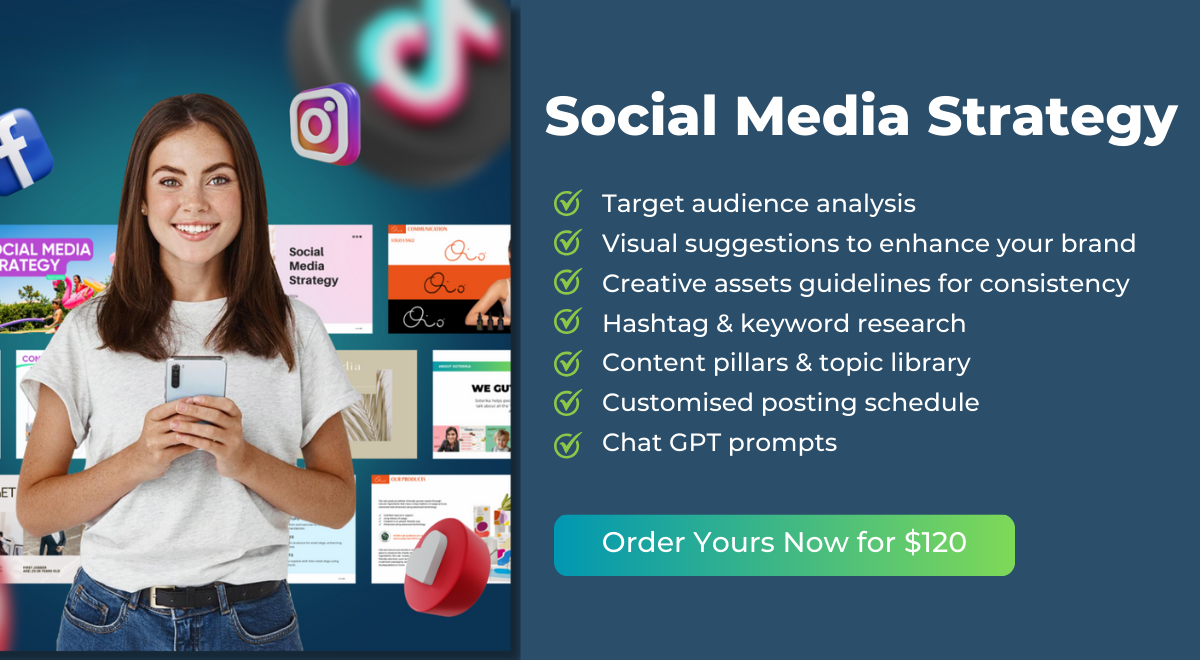Developing a Successful Social Media Marketing Approach for Brands
Ever feel like your social media efforts fall flat? You’re not alone. Many e-commerce businesses struggle to turn their posts into engagement and sales. The good news? With the right strategy, you can create a social media plan that actually works for your brand and be consistent with your social media management.
This guide will help you set clear objectives, understand your audience, choose the right platforms, and develop compelling content that resonates. Let’s dive in!
Define Clear Objectives for Your Social Media Marketing Strategy
Before you start posting, you need to know what you want to achieve. Without clear goals, your social media efforts will lack direction and impact.
Identify Specific Goals for Brand Awareness and Engagement
Your social media strategy should be tied to specific goals, such as:
- Increasing brand awareness
- Driving website traffic
- Boosting customer engagement
- Generating leads or sales
Having defined goals ensures that every post has a purpose and contributes to your business growth.
Determine Key Performance Indicators (KPIs) to Measure Success
Tracking the right KPIs helps you measure whether your social media efforts are paying off. Some important ones include:
- Engagement rate (likes, comments, shares)
- Click-through rate (CTR) on links
- Conversion rate (sales from social traffic)
- Follower growth
Align Social Media Objectives With Overall Business Goals
Your social media marketing shouldn’t exist in a vacuum. Ensure your social media efforts align with your broader business goals, whether it’s scaling revenue, increasing customer retention, or launching a new product.
Research Your Target Audience to Drive Effective Engagement
Social media is about connection. If you’re not speaking to the right people, your efforts will be wasted.
Create Detailed Buyer Personas Based on Demographics and Interests
A solid buyer persona should include:
- Age, gender, and location
- Interests and hobbies
- Shopping behaviour
- Preferred social media platforms
This helps tailor your messaging to what truly resonates with your audience.
Analyse Audience Behaviour Across Different Social Platforms
Not all social platforms are created equal. While Instagram and TikTok thrive on visuals, LinkedIn is great for B2B networking. Research where your audience spends their time and focus your efforts there.
Identify Pain Points and Needs Through Audience Feedback
Listen to what your audience is saying. Comments, reviews, and direct messages are goldmines of information. Use this feedback to refine your content and make your messaging more relevant.
Choose the Right Social Media Platforms for Your Brand
You don’t need to be on every platform—just the ones that matter most to your audience.
Evaluate Platform Demographics and User Behaviours for Relevance
Each platform has a unique audience:
- Facebook: Great for community building and ads.
- Instagram: Ideal for visuals, influencers, and product promotion.
- TikTok: Perfect for short-form video content and younger audiences.
- LinkedIn: Best for B2B engagement and professional networking.
Understand the Unique Features and Content Types Per Platform
Different platforms favour different content styles. Instagram loves high-quality images, TikTok thrives on short videos, and Twitter works best for quick updates and engagement.
Prioritise Platforms Based on Your Audience Presence
Rather than spreading yourself too thin, focus on the platforms where your target audience is most active.
Develop a Compelling Content Strategy That Resonates
Now that you know where to be, let’s talk about what to post.
Plan Content Themes That Align With Audience Interests and Trends
Your content should be valuable to your audience. Consider creating posts around:
- Industry news and updates
- Customer testimonials
- Behind-the-scenes business insights
- User-generated content
- Educational posts
Create a Mix of Rich Media Types for Enhanced Engagement
People engage with different types of content, so mix it up with:
- Images
- Infographics
- Videos
- Live streams
- Polls and interactive content
Schedule Content Using Tools for Consistent Posting
Consistency is key. Scheduling tools like Hootsuite or Buffer help maintain a regular posting schedule without the stress of last-minute content creation.
Implement Effective Engagement Tactics for Audience Interaction
Social media isn’t a one-way street. Engaging with your audience boosts loyalty and trust.
Use Storytelling Techniques to Share Brand Messages Captivatingly
Stories resonate more than sales pitches. Share real experiences, customer journeys, and behind-the-scenes moments to connect emotionally with your audience.
Encourage User-Generated Content to Foster Community Connection
Run contests, feature customer testimonials, or create branded hashtags to encourage your audience to share their experiences with your products.
Respond Promptly to Audience Comments and Messages for Rapport
Timely engagement makes your audience feel valued. Respond to comments, DMs, and mentions to show that you’re listening.
Monitor Performance and Adjust Strategies for Continuous Improvement
Tracking performance is essential for refining your approach over time.
Analyse Social Media Metrics to Identify Trends and Insights
Regularly check your analytics to see what’s working and what isn’t. Identify trends in engagement, reach, and conversions to improve future content.
Conduct A/B Testing to Refine Content and Engagement Tactics
Test different headlines, visuals, and post formats to see which performs best. A/B testing helps you fine-tune your approach for maximum impact.
Stay Updated on Industry Trends for Informed Strategy Adjustments
Social media evolves constantly. Keep up with trends, algorithm changes, and new platform features to stay ahead of the game.
The Biggest Mistake Brands Make on Social Media
Many businesses misuse social media by treating it as a loudspeaker for promotions. Constantly shouting “buy, buy, buy” turns people off. Social media is about connection, not just selling.
To succeed, focus on what your audience wants to hear rather than just what you want to say. Share valuable, engaging, and relatable content that builds trust and relationships. When you prioritise authentic engagement over hard selling, conversions follow naturally.
Final Thoughts
A strong social media marketing strategy isn’t about chasing trends—it’s about knowing your audience, setting clear goals, and creating valuable content. By taking the time to research, plan, and engage, you can turn social media into a powerful tool for brand growth and customer connection. Also, one of the biggest drivers for social media growth and impact is consistency and continuity, if you do not have enough time to commit to it, consider outsourcing your social media marketing all together.
Want to get a birds-eye view on all our social media tps and suggestins? Read our full guide here.


